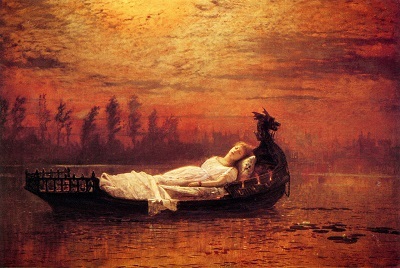What do you think?
Rate this book


40 pages, Paperback
First published January 1, 1833


And round about the prow she wrote: 'The Lady of Shalott'.The schoolgirl, daydreaming and only half paying attention, imagines herself talking with Tennyson's eponymous heroine.


Willows whiten, aspens shiver.
The sunbeam showers break and quiver
In the stream that runneth ever
By the island in the river
Flowing down to Camelot.
Four gray walls, and four gray towers
Overlook a space of flowers,
And the silent isle imbowers
The Lady of Shalott.